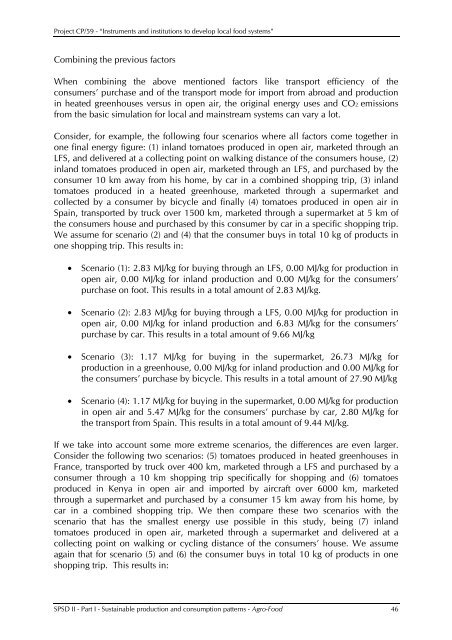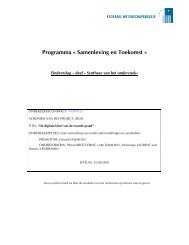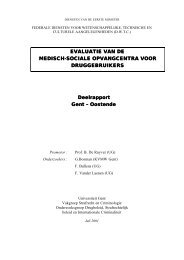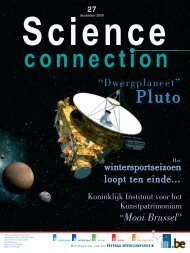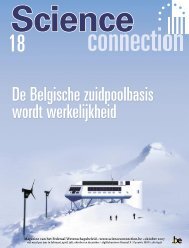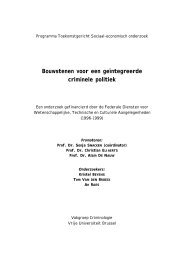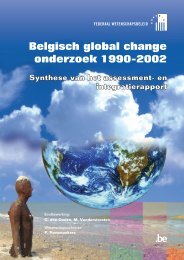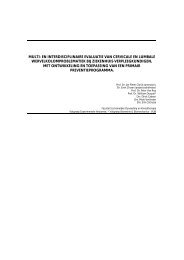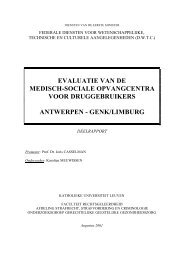chapter 3 inventory of local food systems
chapter 3 inventory of local food systems
chapter 3 inventory of local food systems
Create successful ePaper yourself
Turn your PDF publications into a flip-book with our unique Google optimized e-Paper software.
Project CP/59 - “Instruments and institutions to develop <strong>local</strong> <strong>food</strong> <strong>systems</strong>”<br />
Combining the previous factors<br />
When combining the above mentioned factors like transport efficiency <strong>of</strong> the<br />
consumers’ purchase and <strong>of</strong> the transport mode for import from abroad and production<br />
in heated greenhouses versus in open air, the original energy uses and CO2 emissions<br />
from the basic simulation for <strong>local</strong> and mainstream <strong>systems</strong> can vary a lot.<br />
Consider, for example, the following four scenarios where all factors come together in<br />
one final energy figure: (1) inland tomatoes produced in open air, marketed through an<br />
LFS, and delivered at a collecting point on walking distance <strong>of</strong> the consumers house, (2)<br />
inland tomatoes produced in open air, marketed through an LFS, and purchased by the<br />
consumer 10 km away from his home, by car in a combined shopping trip, (3) inland<br />
tomatoes produced in a heated greenhouse, marketed through a supermarket and<br />
collected by a consumer by bicycle and finally (4) tomatoes produced in open air in<br />
Spain, transported by truck over 1500 km, marketed through a supermarket at 5 km <strong>of</strong><br />
the consumers house and purchased by this consumer by car in a specific shopping trip.<br />
We assume for scenario (2) and (4) that the consumer buys in total 10 kg <strong>of</strong> products in<br />
one shopping trip. This results in:<br />
• Scenario (1): 2.83 MJ/kg for buying through an LFS, 0.00 MJ/kg for production in<br />
open air, 0.00 MJ/kg for inland production and 0.00 MJ/kg for the consumers’<br />
purchase on foot. This results in a total amount <strong>of</strong> 2.83 MJ/kg.<br />
• Scenario (2): 2.83 MJ/kg for buying through a LFS, 0.00 MJ/kg for production in<br />
open air, 0.00 MJ/kg for inland production and 6.83 MJ/kg for the consumers’<br />
purchase by car. This results in a total amount <strong>of</strong> 9.66 MJ/kg<br />
• Scenario (3): 1.17 MJ/kg for buying in the supermarket, 26.73 MJ/kg for<br />
production in a greenhouse, 0.00 MJ/kg for inland production and 0.00 MJ/kg for<br />
the consumers’ purchase by bicycle. This results in a total amount <strong>of</strong> 27.90 MJ/kg<br />
• Scenario (4): 1.17 MJ/kg for buying in the supermarket, 0.00 MJ/kg for production<br />
in open air and 5.47 MJ/kg for the consumers’ purchase by car, 2.80 MJ/kg for<br />
the transport from Spain. This results in a total amount <strong>of</strong> 9.44 MJ/kg.<br />
If we take into account some more extreme scenarios, the differences are even larger.<br />
Consider the following two scenarios: (5) tomatoes produced in heated greenhouses in<br />
France, transported by truck over 400 km, marketed through a LFS and purchased by a<br />
consumer through a 10 km shopping trip specifically for shopping and (6) tomatoes<br />
produced in Kenya in open air and imported by aircraft over 6000 km, marketed<br />
through a supermarket and purchased by a consumer 15 km away from his home, by<br />
car in a combined shopping trip. We then compare these two scenarios with the<br />
scenario that has the smallest energy use possible in this study, being (7) inland<br />
tomatoes produced in open air, marketed through a supermarket and delivered at a<br />
collecting point on walking or cycling distance <strong>of</strong> the consumers’ house. We assume<br />
again that for scenario (5) and (6) the consumer buys in total 10 kg <strong>of</strong> products in one<br />
shopping trip. This results in:<br />
SPSD II - Part I - Sustainable production and consumption patterns - Agro-Food 46


